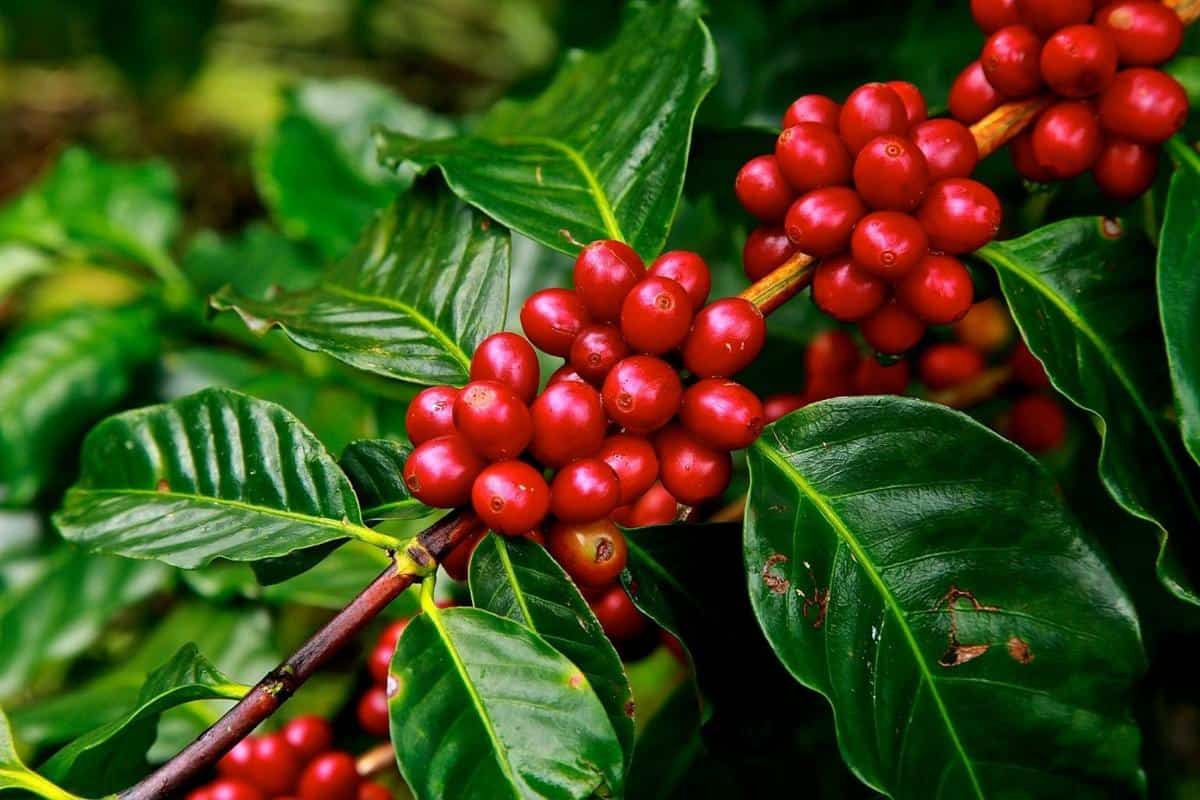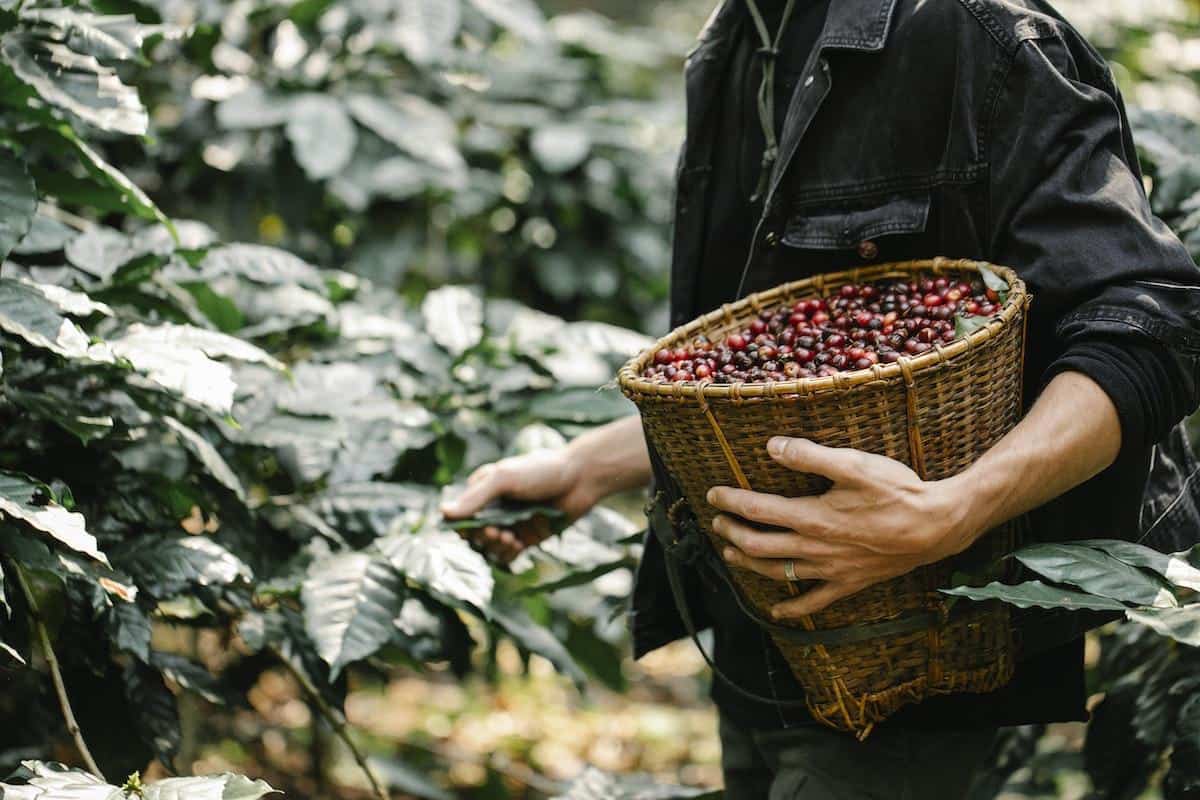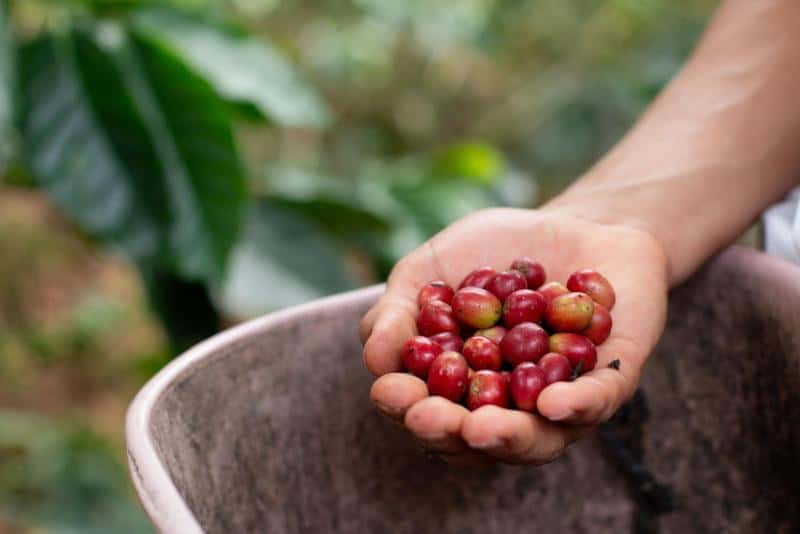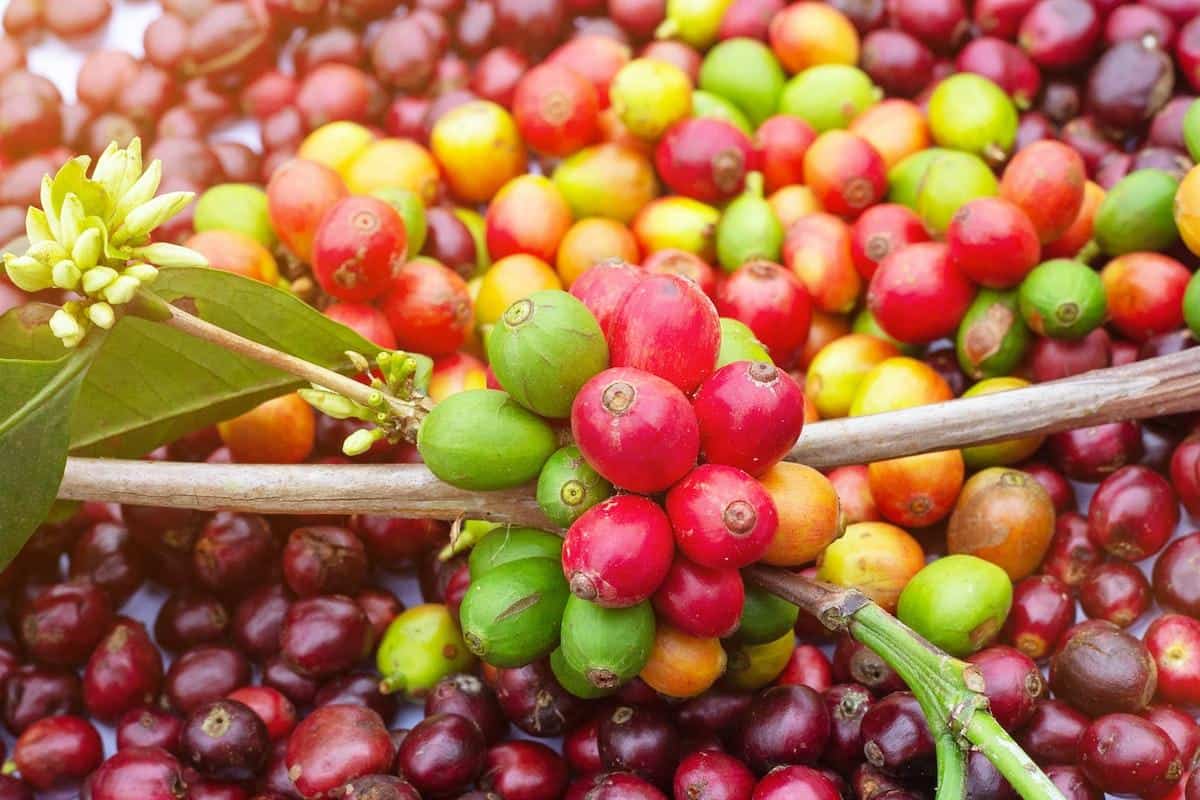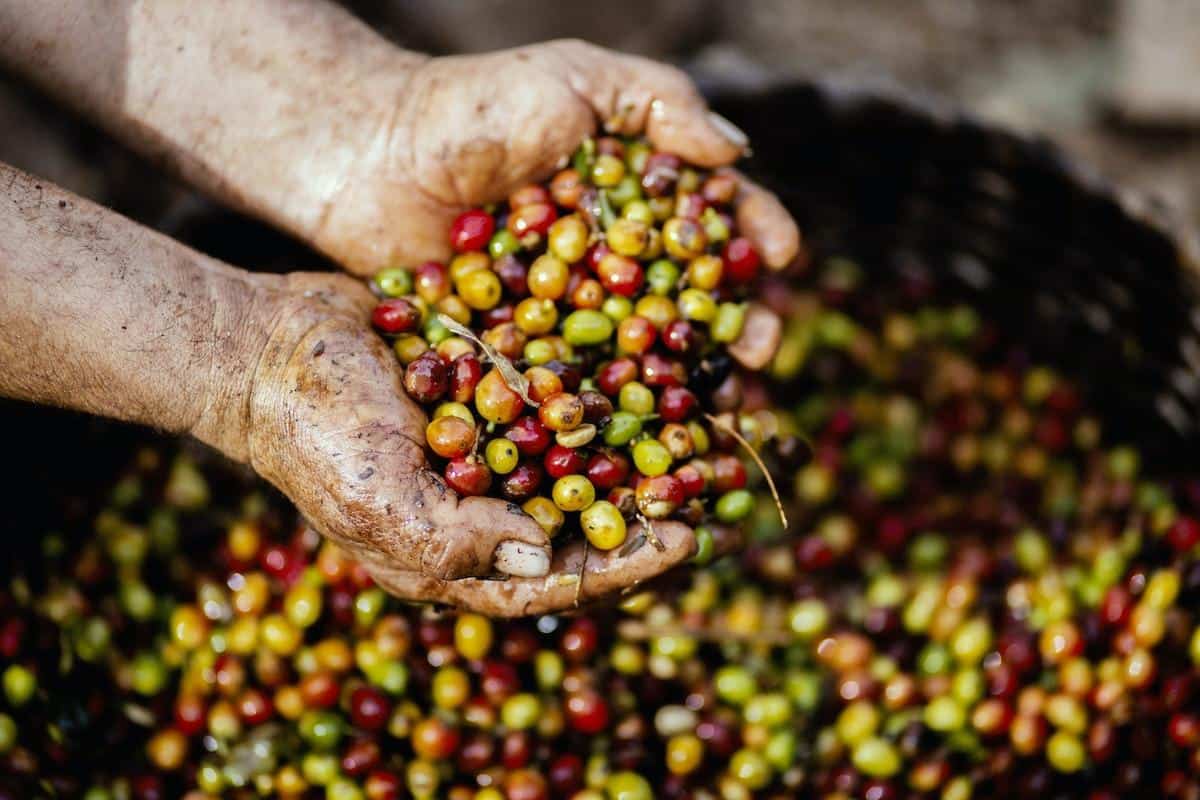The journey of coffee beans from seed to cup is a fascinating process that spans continents and showcases the diverse flavors and characteristics of this beloved beverage. Coffee holds a significant place in cultures around the world and is enjoyed by millions of people daily.
However, have you ever wondered where coffee beans actually grow? In this article, we will delve into the origins and cultivation of coffee beans, exploring the regions where they thrive and the factors that contribute to their growth.
Coffee has become a staple in many households and cafes worldwide, with its popularity showing no signs of slowing down. The coffee industry not only provides livelihoods for countless farmers but also drives economies in coffee-growing regions. Understanding the journey of coffee beans, from their cultivation to their preparation as a delicious beverage, allows us to appreciate the complex processes involved and enhances our enjoyment of every sip.
To understand where coffee beans grow, we must explore the various regions around the world that offer ideal conditions for their cultivation. The geographical factors that influence coffee bean growth are crucial to producing high-quality beans with distinct flavors. Different altitudes, temperatures, rainfall patterns, and soil qualities impact how each region’s coffee crop develops. By examining these factors, we can gain insight into why certain countries are renowned for their exceptional coffees.
Join us as we embark on an exploration of the “Coffee Belt” or “Coffee Zone” around the world – an area located between the Tropics of Cancer and Capricorn that spans across Asia, Africa, Central America, and South America. Within this belt lies an abundance of countries known for cultivating remarkable coffee beans.
We will dive into specific regions within this belt and discover how each contributes its own unique flavors to our morning brew. So grab your favorite mug as we embark on this flavorful journey from seed to cup.
The Geographical Factors That Influence Coffee Bean Growth
Coffee, one of the most beloved and widely consumed beverages in the world, starts its journey as a humble bean. From seed to cup, various factors influence the growth and development of coffee beans. Geographical conditions play a crucial role in determining the quality and flavor profile of coffee. In this section, we will explore the geographical factors that influence coffee bean growth and highlight their significance.
Ideal Climatic and Environmental Conditions
Coffee beans thrive in specific climatic and environmental conditions. The three primary elements that significantly influence coffee cultivation are altitude, temperature, and rainfall.
Altitude:
Altitude has a significant impact on the flavor characteristics of coffee. Generally, higher altitudes result in slower maturation of the coffee cherries, which leads to more concentrated flavors. High-altitude regions provide cooler temperatures, which contribute to slower ripening and increased acidity in the beans.
Temperature:
Coffee plants require moderate temperatures for optimal growth. The temperature range should be between 60°F (15°C) and 70°F (24°C). Extreme temperatures can negatively affect the growth of coffee plants, while consistent mild temperatures promote healthy plant development.
Rainfall:
An adequate and well-distributed rainfall pattern is vital for the successful cultivation of coffee beans. Coffee plants typically require an average annual rainfall between 60 inches (150 cm) to 120 inches (300 cm). Insufficient or excessive rainfall can be detrimental to the health and productivity of these plants.
Soil Quality:
Apart from climatic conditions, soil quality plays a crucial role in determining the success of coffee bean growth. Well-drained soils that are rich in organic matter provide ideal conditions for healthy root development. Volcanic soils are highly prized for their fertility due to high mineral content, enhancing the flavors of coffee beans grown in such regions.
Understanding these geographical factors helps us appreciate why certain regions around the world produce exceptional coffees with unique flavor profiles. Now let’s explore the Coffee Belt, also known as the Coffee Zone, where coffee beans are primarily grown.
Exploring the Coffee Belt
Understanding the Coffee Belt
The coffee belt, also known as the coffee zone, is a region of the world that encompasses the areas with the ideal conditions for coffee bean cultivation. It stretches between the Tropics of Cancer and Capricorn and is located within latitudes 25 degrees North and 30 degrees South.
This geographical band includes some of the most renowned coffee-producing countries such as Brazil, Colombia, Ethiopia, Costa Rica, Vietnam, and Indonesia. The unique combination of temperature, altitude, rainfall, and soil quality found within this belt contributes to the growth and development of high-quality coffee beans.
Prominent Coffee-producing Countries
Within the coffee belt, several countries stand out for their significant contributions to global coffee production. Brazil is by far the largest producer of coffee beans in the world. The country’s vast landscapes and favorable climate allow for massive-scale cultivation.
Colombia is renowned for its high-quality Arabica beans grown in mountainous regions with rich volcanic soil. Ethiopia holds a special place in coffee history as it is considered the birthplace of Coffea Arabica. Its diverse microclimates produce an array of unique flavor profiles.
Costa Rica has established itself as a producer of specialty Arabica beans due to its ideal altitude and volcanic soils. In Asia, Vietnam dominates Robusta bean production and exports thanks to its humid climate and fertile land. Indonesia provides a unique range of flavors with coffees from Sumatra known for their full body and earthy profiles.
The Unique Flavors From Different Regions
One fascinating aspect of exploring different coffee-growing regions within the coffee belt is discovering how they impart distinct flavors into their beans. Factors such as altitude, rainfall patterns, soil composition, and variety selection contribute to these flavor profiles.
For example, Ethiopian coffees are known for their floral aromas, vibrant acidity, and fruity undertones. In contrast, Brazilian coffees often have nutty and chocolatey characteristics. Colombian coffees are celebrated for their well-balanced flavors and brightness.
Indonesian coffee exhibits earthy and spicy notes, while Costa Rican Arabicas are prized for their acidity and sweet citrus flavors. Vietnamese Robusta beans offer a robust and bold taste loved by those seeking a strong cup of coffee.
Exploring the unique flavors from different regions opens up a world of variety, allowing coffee lovers to experience the nuanced tastes influenced by geography, climate, and culture.
Origins of Coffea Arabica and Coffea Robusta
The cultivation of coffee beans is a complex and diverse process that involves different species of coffee plants. The two most well-known and widely cultivated species are Coffea Arabica and Coffea Robusta. Understanding the origins and thriving regions of these coffee species is crucial in appreciating the diversity and flavors that coffee beans offer.
Coffea Arabica: The Most Common and Favored Species
Coffea Arabica, often referred to as Arabian coffee or simply Arabica, is the most commonly grown and favored species of coffee. Known for its smooth flavor, complexity, and lower caffeine content compared to other species, Arabica accounts for approximately 70% of the world’s coffee production.
Arabica thrives best in higher altitudes with mild temperatures ranging from 60°F to 70°F (15°C to 24°C). It requires specific conditions such as a consistent climate, moderate rainfall between 60 to 100 inches (150 to 250 cm) annually, well-draining fertile soil, and shade from direct sunlight. These ideal growing conditions make certain regions around the world particularly suitable for cultivating this delicate species.
Prominent regions where Coffea Arabica thrives include:
- Colombia: Renowned for producing high-quality Arabica beans with bright acidity, caramel sweetness, and medium body.
- Ethiopia: Often hailed as the birthplace of coffee itself, Ethiopian Arabicas offer a wide range of flavors including fruity and floral notes.
- Costa Rica: This Central American country produces clean-tasting coffees with bright acidity, citrus notes, honey-like sweetness, and medium body.
- Brazil: As the world’s largest producer of Arabica beans, Brazil offers an array of flavors ranging from nutty to chocolatey with low acidity.
Coffea Robusta: Preferred in Specific Growing Regions
Coffea Robusta, also known as Robusta coffee, is the second most cultivated species, accounting for roughly 30% of global coffee production. While it is often considered to have a harsher and more bitter taste compared to Arabica, Robusta is valued for its higher caffeine content and disease resistance.
Robusta thrives in lower altitudes with temperatures between 75°F to 85°F (24°C to 29°C). It requires substantial rainfall ranging from 80 to 100 inches (200 to 250 cm) annually and well-draining soil with lower acidity. These conditions are prevalent in specific regions globally.
Prominent regions where Coffea Robusta thrives include:
- Vietnam: As the world’s largest producer of Robusta beans, Vietnam produces coffees with bold flavors, earthy notes, high bitterness, and full body.
- Uganda: Ugandan Robustas are known for their diverse flavors such as tobacco, chocolate, and fruity notes.
- India: Particularly the southern regions of Karnataka and Kerala are renowned for producing quality Robustas with a clean taste profile.
Understanding the origins and thriving regions of Coffea Arabica and Coffea Robusta provides insight into the diverse tastes that different coffee beans can offer. Whether you prefer the delicate nuances of Arabica or appreciate the strong bitterness of Robusta, each species has its own unique characteristics influenced by the environment it grows in.
The Rich Heritage of Ethiopian Coffee
The birthplace of Arabica coffee, Ethiopia holds a rich heritage in the cultivation and production of coffee beans. With its unique flavor profiles and historical significance, Ethiopian coffee has made a significant impact on the global coffee trade.
Ethiopia’s coffee-growing regions are diverse and span different altitudes and microclimates, resulting in a wide range of flavors and characteristics in their coffee beans. The three main regions known for their high-quality coffee production include Sidamo, Yirgacheffe, and Harrar.
Sidamo is located in southern Ethiopia and is known for its delicate floral and citrus notes. It produces both washed and unwashed coffees, with washed coffees having a cleaner taste profile. Yirgacheffe, found in the Sidama Zone of southern Ethiopia, is renowned for its vibrant acidity, fragrant aroma, and distinct floral flavors.
Finally, Harrar is situated in eastern Ethiopia and is famous for its wild or “natural” processing method that involves drying the coffee cherries with their pulp intact. This process imparts a complex fruity flavor to the beans.
Ethiopian coffee holds such historical importance because it is believed to be the birthplace of Arabica coffee. Legend has it that an Ethiopian herder named Kaldi discovered the energizing effects of coffee when he noticed his goats became excited after consuming certain berries from a particular plant. This led to further exploration of these berries by monks who eventually brewed them into what we know today as coffee.
The global appreciation for Ethiopian coffee is undeniable. Its distinct flavors contribute to the uniqueness of specialty coffees worldwide. Just like wine regions have their own terroir that influences wine characteristics, so does each Ethiopian region have its specific terroir that affects the flavors found in their arabica beans.
| Region | Flavor Profile |
|---|---|
| Sidamo | Delicate floral and citrus notes, balanced acidity |
| Yirgacheffe | Vibrant acidity, distinct floral flavors, fruity undertones |
| Harrar | Fruity and wine-like flavors, complex profile |
Ethiopian coffee continues to be highly respected and sought after by coffee connoisseurs around the world. Its rich heritage, combined with its distinctive taste profiles, makes it an essential part of the global coffee industry. Whether enjoyed in specialty coffee shops or brewed at home, exploring Ethiopian coffees allows coffee enthusiasts to appreciate the origins and diversity of this beloved beverage.
From the Andean Heights to the Brazilian Plains
South America is renowned for its significant contributions to the coffee industry, with countries like Brazil, Colombia, and Peru being major players in coffee bean production. The diverse landscapes, altitudes, and microclimates found in these regions contribute to the unique flavors and characteristics of South American coffee beans.
Brazil holds the top spot as the world’s largest producer and exporter of coffee. The country’s vast coffee plantations cover a variety of landscapes, from rolling hills to flat plains. The Brazilian coffee industry thrives particularly in the southeastern states of Minas Gerais, São Paulo, and Espírito Santo.
These regions offer ideal conditions for growing Arabica and Robusta coffee beans due to their moderate altitudes and rich volcanic soil. Brazilian coffee is known for its mild flavor and low acidity, making it suitable for both blends and single-origin coffees.
Colombia is another prominent player in the South American coffee scene. Its reputation for producing high-quality Arabica beans has made it a sought-after origin worldwide.
The Colombian Coffee Axis, located in the central region of the country around Medellín, Armenia, and Manizales, boasts an optimal combination of altitude, temperatures between 60-70°F (15-24°C), rainfall patterns, and fertile soils that create exceptional growing conditions. Colombian coffee is recognized for its well-balanced flavor profile characterized by bright acidity, medium body, and notes of caramel and chocolate.
Peru may be less commonly associated with coffee production compared to Brazil or Colombia. However, it has established itself as a rising star in the specialty coffee market. With its diverse geography encompassing the Andes Mountains’ heights up to 6,000 feet (1,800 meters) above sea level and lush Amazon rainforests below, Peru offers a range of climates suitable for various coffee varieties.
Regions like Cajamarca and Puno are known for producing flavorsome Arabica beans with distinct taste profiles, including fruity, floral, and chocolate notes. Peru’s commitment to sustainable and organic farming practices also contributes to the appeal of its coffee in the specialty market.
Overall, South America presents a rich tapestry of coffee-growing regions that offer an array of flavors and characteristics. The unique landscapes and environmental factors found in countries like Brazil, Colombia, and Peru shape the taste experience for coffee lovers around the world. Exploring the diverse offerings from these South American coffee paradises allows coffee enthusiasts to appreciate the origins and diversity of this beloved beverage.
The African Coffee Explosion
Africa is experiencing a coffee revolution as new regions emerge as significant players in the coffee industry. Beyond Ethiopia, which is often hailed as the birthplace of Arabica coffee, countries such as Kenya, Tanzania, Rwanda, and Uganda are making their mark on the global coffee trade. These African nations offer unique flavors and characteristics that contribute to the diversity of coffee worldwide.
Kenya has been producing high-quality coffee for decades and is known for its bright acidity and complex flavor profiles. The country’s rich volcanic soils and high altitudes provide ideal conditions for growing Arabica coffee beans. Kenyan coffees often exhibit notes of blackcurrant, citrus, and wine-like acidity. The meticulous processing methods used by Kenyan farmers also contribute to the exceptional quality of their beans.
Tanzania is another African country that has gained recognition for its specialty coffee production. The slopes of Mount Kilimanjaro and Mount Meru provide excellent altitude for growing Arabica beans. Tanzanian coffees are known for their well-balanced flavors with hints of chocolate, caramel, and citrus. Many smallholder farmers in Tanzania focus on organic farming practices, ensuring that their coffees are not only delicious but also sustainably produced.
Other emerging coffee growing regions in Africa include Rwanda and Uganda. Rwanda has overcome significant challenges from its troubled past to establish itself as a notable player in the specialty coffee market. The country’s high-altitude areas produce sweet and floral coffees with undertones of tea-like flavors. Uganda, on the other hand, is primarily recognized for its robusta coffee production. However, there is a growing interest in arabica cultivation too due to rising demand for specialty coffees.
Despite their potential for growth in the coffee industry, African countries face various challenges such as climate change impacts including increased temperatures and irregular rainfall patterns. Additionally, issues related to infrastructure development and lack of access to finance hinder the growth and sustainability of their coffee industries. However, African farmers continue to innovate and find solutions to overcome these challenges, such as implementing sustainable farming practices and participating in direct trade relationships.
Asian Coffee Paradises
Asia is home to some of the fastest-growing coffee-producing nations in the world. Vietnam, Indonesia, and India have carved a niche for themselves in the global coffee industry with their unique coffee cultivations and rich flavor profiles. Let’s explore these Asian coffee paradises and discover what makes them stand out.
- Vietnam: Known as the world’s second-largest coffee producer after Brazil, Vietnam mainly cultivates Coffea Robusta beans. The country has a favorable climate for coffee cultivation with its tropical weather, high altitudes in regions like Dalat and Buon Ma Thuot, and abundant rainfall. Vietnamese Robusta beans are highly sought after for their distinctive taste characterized by chocolatey notes and strong caffeine content. The robusta beans from Vietnam are commonly used in espresso blends around the world.
- Indonesia: With its volcanic soil and ideal microclimates, Indonesia produces unique Arabica coffees that have captured the attention of coffee connoisseurs. Sumatra is the most well-known coffee-growing region in Indonesia, famous for its Mandheling and Gayo coffees. These Arabica beans exhibit low acidity, full-bodied flavors with earthy tones, and hints of spice. Java is another notable region where premium Arabica varieties are cultivated.
- India: Home to various specialty Arabica plantations, India offers a diverse range of flavor profiles influenced by different regions across the country. In particular, Karnataka (Coorg) and Kerala are renowned for their high-quality Arabica beans. Indian coffees often display fruity notes such as blackcurrant or citrus along with medium acidity balanced by a smooth mouthfeel. Additionally, India produces unique specialty coffees like Monsooned Malabar, which undergoes an exceptional processing method resulting in a distinctive flavor of earthiness complemented by gentle sweetness.
These Asian coffee paradises contribute significantly to the global coffee industry while showcasing their own distinct characteristics. From Vietnam’s robusta dominance to Indonesia’s sought-after Arabica beans and India’s specialty cultivations, these countries are making their mark in the coffee world. Coffee aficionados can explore the diverse flavors and unique brewing methods associated with each Asian coffee paradise, enhancing their appreciation for the global coffee culture.
The Future of Coffee Bean Cultivation
Climate change poses significant challenges to the future of coffee bean cultivation, as alterations in temperature, rainfall patterns, and weather events can severely impact coffee crops. Coffee plants are highly sensitive to changes in climate, requiring specific conditions to thrive. As a result, the search for new growing regions and innovative techniques has become crucial in ensuring the sustainability of the coffee industry.
One potential game-changer in coffee bean cultivation lies in unexpected regions that were previously unsuitable for coffee production due to their climatic conditions. With shifting climatic patterns and advancements in agricultural technology, areas such as China, Hawaii, and California are emerging as new frontiers for coffee cultivation.
In China, for example, Yunnan province has shown promise as a viable region for coffee farming. The cool temperatures and high altitude create a microclimate suitable for Arabica varieties. Although still in its early stages compared to traditional coffee-growing countries, the Chinese market has already gained attention due to its increasing production and unique flavor profiles.
In Hawaii and California, small-scale specialty coffee farms have been sprouting up, taking advantage of their favorable climates for growing high-quality Arabicas. The volcanic soils of Hawaii’s Kona region contribute to its distinct taste profile, while the microclimates throughout California’s coastal areas offer diverse growing conditions that yield different flavor characteristics.
The exploration of these new frontiers reflects both the adaptability of the industry and its commitment to finding sustainable solutions. By expanding into alternative regions and implementing innovative approaches to farming methods, coffee producers can potentially reduce the risks posed by climate change while continuing to provide consumers with a wide range of unique flavors from around the world.
Conclusion
In conclusion, understanding where coffee beans grow is crucial for appreciating the origins and diversity of this beloved beverage. Throughout this article, we have explored the various regions around the world that serve as the birthplaces and homes of coffee cultivation. From the high altitudes of Ethiopia to the sprawling plains of Brazil, each region contributes its unique flavors and characteristics to the global coffee trade.
The geographical factors that influence coffee bean growth, such as altitude, temperature, rainfall, and soil quality, play a significant role in shaping the taste profiles of different beans. And within these regions, specific countries and areas stand out for their exceptional coffee production. Whether it’s Colombia’s renowned Arabica beans or Vietnam’s robust Robusta beans, each region has its distinct coffee landscape to offer.
However, as climate change continues to pose challenges to traditional coffee-growing regions, there is a need to explore new frontiers for coffee cultivation. Emerging areas like China, Hawaii, and California show promise in becoming future game-changers in the industry. The search for alternative growing regions and innovative techniques will be essential for adapting to changing conditions and ensuring a sustainable future of coffee production.
Frequently Asked Questions
Do coffee beans grow in the UK?
Coffee beans do not typically grow in the UK. The climate in the UK is generally too cold for coffee plants to thrive and produce beans.
Coffee plants require specific temperature ranges, humidity levels, and elevation conditions that are more commonly found in tropical regions near the equator. While it may be possible to grow coffee plants in controlled environments or greenhouses in the UK, commercial-scale cultivation of coffee beans is not feasible due to the climate limitations.
Where do coffee beans come from to the UK?
Coffee beans are primarily imported to the UK from countries that have favorable growing conditions for coffee plants. The largest exporters of coffee globally include Brazil, Vietnam, Colombia, Ethiopia, and Honduras.
These countries have the necessary combination of temperature, rainfall patterns, altitude, and soil quality that allow coffee plants to flourish and yield high-quality beans. Once harvested, processed, and roasted in their country of origin, these coffee beans are then exported and shipped to various destinations worldwide, including the UK.
What do coffee beans grow on?
Coffee beans grow on trees known as Coffea arabica or Coffea canephora (commonly referred to as Arabica and Robusta). These trees bear small fruits known as cherries which contain two seeds or “beans” surrounded by a thin layer of sweet pulp.
Each cherry typically contains two coffee beans facing each other with their flat sides touching. The cherries are picked when they reach maturity which occurs at different times depending on the variety of coffee plant and its specific geographical location.
Where are coffee beans usually grown?
Coffee beans are usually grown in tropical regions within a specific range of latitudes known as the “Coffee Belt” or “Bean Belt.” This belt stretches between approximately 25 degrees north latitude and 30 degrees south latitude around the world’s equator.
Some examples of countries that lie within this belt include Brazil, Colombia, Ethiopia, Vietnam, Indonesia, Costa Rica, Guatemala, Kenya, Mexico, Peru, and many others. These regions offer the optimal combination of temperature, rainfall, altitude, and soil conditions necessary for coffee plants to thrive.
Why is coffee not grown in the UK?
The primary reason why coffee is not grown in the UK is the unfavorable climate for coffee plant cultivation. Coffee plants require specific temperature ranges, typically between 60°F (15°C) and 70°F (24°C), along with consistent humidity and rainfall patterns to grow successfully. The UK’s unpredictable weather conditions, particularly its colder average temperatures, do not provide the necessary conditions for coffee plants to thrive and bear fruit.
Growing coffee on a commercial scale would be challenging due to these climate limitations, leading to limited yields of low-quality beans. Therefore, importing coffee from countries better suited for its cultivation remains the norm in the UK.

